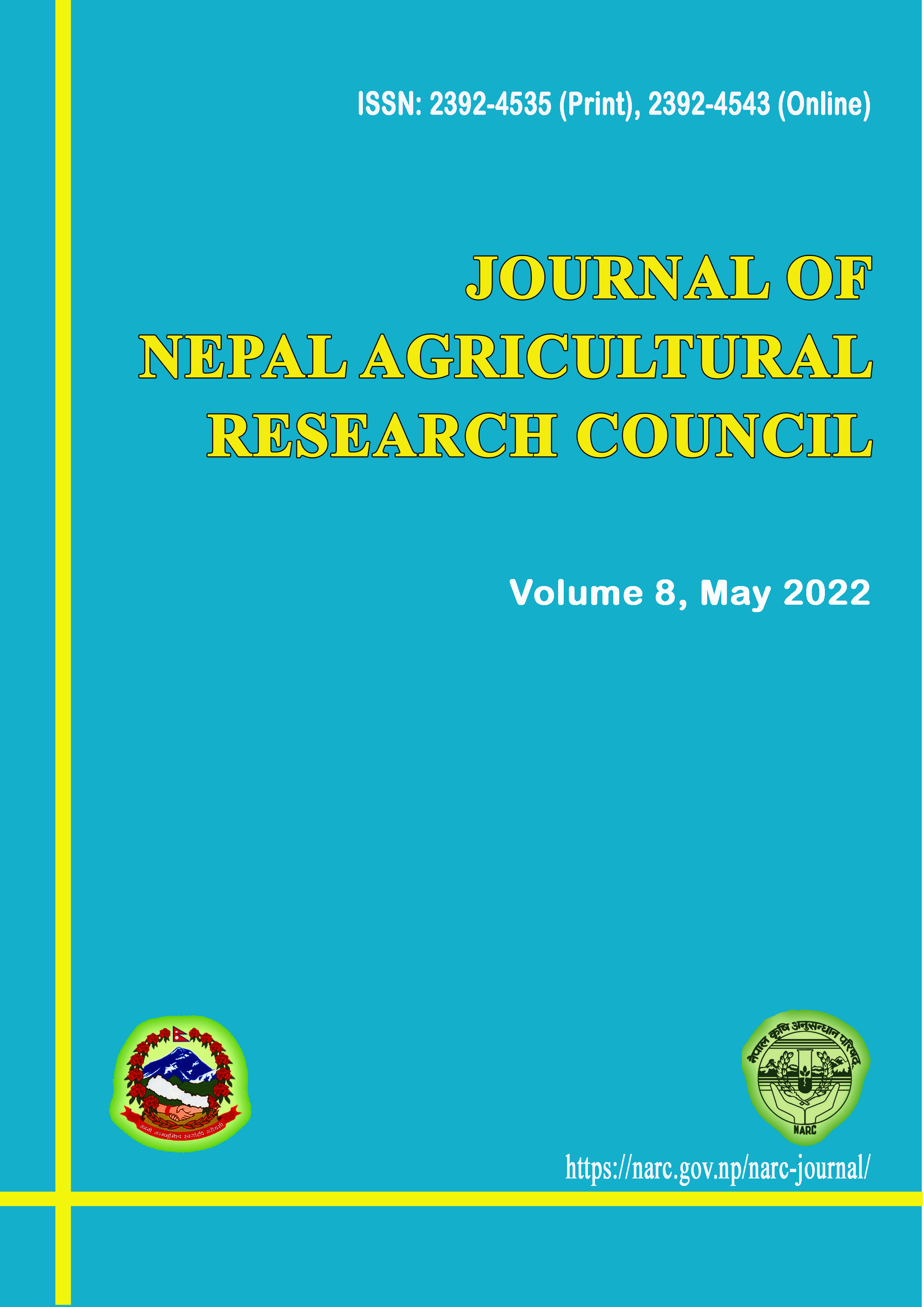Screening of Maize Genotypes against Maize Leaf Aphid [Rhopalosiphum maidis (Fitch)] under Field Condition at Chitwan, Nepal
DOI:
https://doi.org/10.3126/jnarc.v8i.44806Keywords:
aphid, genotype, maize, resistanceAbstract
Thirty maize genotypes including five hybrids, eight quality protein (QPM) and seventeen full season open pollinated (OP) were screened for their resistance against maize leaf aphid (Rhopalosiphum maidis Fitch) at the research field of National Maize Research Program, Rampur, Chitwan, Nepal during the year 2019 and 2020. The design of the experiment was randomized incomplete block with three replications. The plot size was 2 rows of 5 m long with the spacing of 60 cm × 25 cm. The recommended dose of fertilizer for full season OP and QPM were 120:60:40 and for hybrid maize 180:60:40 N: P2O5:K2O kg/ha with farmyard manure 10 t/ha and seed rate was 20 kg/ha. Data on aphid incidence, severity, yield and yield components were recorded. Maize hybrids RML-95/RML-96 (18%) and Rampur Hybrid-10 (22%), two quality protein maize (QPM) S00TLYQ-AB (22%) and S99TLYQ-A (23%) and two full season OP genotypes TLBRS07F16 (24%) and ZM 627 (26%) were less susceptible to aphid infestation and resulted in higher grain yield. The findings could aid in the selection of maize genotypes for the development of aphid resistant and high-yielding maize varieties.
Downloads

Downloads
Published
How to Cite
Issue
Section
License
Copyright (c) 2022 Nepal Agricultural Research Council

This work is licensed under a Creative Commons Attribution-NonCommercial 4.0 International License.



